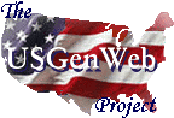|
Behlmer, Kratzer, Schuch, Dreyer, Haas, Nieman, Feller, Schmidt, Dieselberg, Zimmer, Wullner, Feist, Lange, Kneer, Brinkman, Horman, Bauerlein, Trautman, Ester, Endres, Bruns, Nordloh, Schule, Mendel, Schwab, Kammeyer, Westrick, Hoff, Vogelsang, Hillman, Schneider, Beer, Cors, Wippel, Neukam, Dupp, Schorling, Meyers, Wittkamper, Goldschmidt, Groseklouse, Ketchum, Newfarth, Scheivley, Minger, Kress, Holowadel & Huber were constant reminders of their diverse German origins overseas, even if the given names of Herman and Wilhelm were seen less frequently. The sauerkraut and potato salad at church socials and German "grits"(known variously as goetta, knipp, and stopsel) served today at some area restaurants suggest another element of German culture as do the graveyards filled with poetic German stones that no one can translate anymore By 1930 the German language ceased to be taght in schools or used in churches; and a few old-timers no longer even pretended to speak Platt-Deutsch. Yet there were still some cultural habits of German origins, orderliness, tidyness, and promtpness. Home furnishings and tombstones were a little more substantial in size than those of most "Yankee Hoosiers". Afer WWI, Sunman ceased to be overtly ethnic, but may have remained covertly so. Sunman's Most Influential Sunman was named for a Yorkshire family of Viking Descent which settled in Adams Twp before the arrival of most Germans, who other than Pennsylvania-Germans, did not begin arriving in the area in great numbers before 1833. Pennsylvaniaburg |
(Penntown) had been platted 2 miles north in 1837. By 1856 when Sunmansville was platted, German immigration had reached its peak in the area. One family stands out among them; the Niemans of Engter in the old Kingdom of Hannover near the site of the 9 A.D. Battlefield at Kalkriese. Gerhard Herman Nieman was born in 1828, the grandson of Claus Heinrich and Margarethe Menkhause Nieman. He married Johanna Christine Amalia Geist, and they had 12 children. In 1861, Herman Nieman bought the property of John Tangman who had built the first store at the railroad crossing in what would become the center of Sunman. He built a new two-story brick and frame residence and store. For 41 years Herman and his son Henry and family operated the store.Nieman also built a large hay barn and hay press at the site of the feed store immediately across the R.R. track to the north. Even though it burned several times, it was always rebuilt. He also had a cattle barn on the northeast corner of the track. There he operated a slaughter house and stock yard where hogs were dressed and shipped to Cincinnati. Herman Nieman and Herman Dreyer (also of Engter) were in partnership in a brickmaking business, and Herman Nieman was also the first to bring the reaper, dropper and binder to Sunman which replaced the sickle, scythe & cradle. His son Chris and his son-in-law Fred Peters, Jr.owned and operated the first creamery in Sunman beginning in 1885. In 1904 Chris Nieman platted the Nieman addition to the town consisting of 13 lots on the northeast side where Lew Wallace camped during Morgan's Raid, not knowing that Morgan was 2 miles to the south of Sunman, trying to rest. In 1900, a number of influential business men met and established Sunman's first bank, the Sunman State Bank, and Chris Nieman became its first President |
and remained so until his death in 1918. The Herman Nieman family was the single-most important force in Sunman's economic development. If it had not already been named Sunman the town might well have been given the German name of "Nieman". Just as well, since Sunman street signs still mis-spell the name as "Neiman". ED BEHLMER & THA STORE LEWIS SIEG & SOME SUNMAN BUILDINGS Sunman is noted for its carpenter-builder, Lewis Sieg, who built over 40 homes snd business buildings in Sunman during his career. Among the more substantial is the brick "Sieg Building" on the east side of Meridian St. facing the corner of Meridian & Vine. It is not known exactly which other buildings are his, but "Tha Store' is probably one of them. Its face was changed to widen the street. Lewis Sieg's fathr, Henry Sieg, was from Bavaria(probably the Palatinate), and his wife Kate was |
 | Ripley County, INGenWeb Project |  |